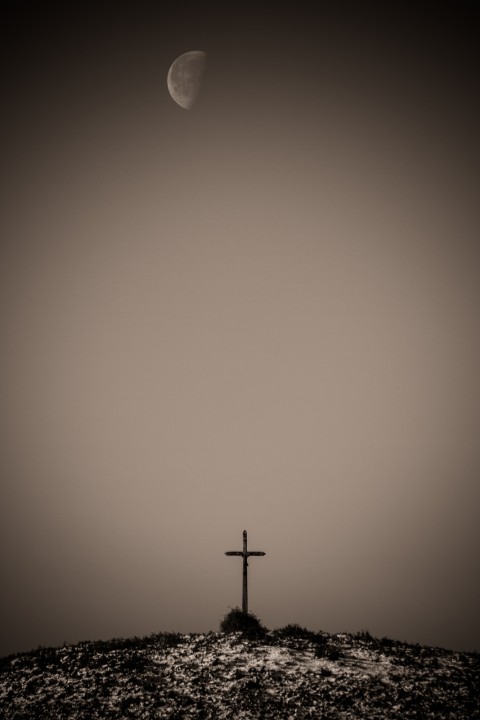My fear of the cross
In Sunday school I colored in Jesus’ crown of thorns, brown for brambles and red for dripping blood.
As a child I was afraid of the cross. Crosses with Jesus’ bloody body terrified me, but even the empty ones I saw in my father’s Lutheran church gave me shivers.
My father was a liberal Protestant, but my grandfather, who was also a minister, held a more traditional view of atonement theology. He believed that all the world’s sinful souls were responsible for Jesus’ suffering. In Sunday school I colored in Jesus’ crown of thorns, brown for brambles and red for dripping blood. On the wall of my bedroom hung a small white cross that glowed purple at night, reminding me—even in the sanctuary of my bed—that I had contributed to an innocent man’s murder. In one particularly scary sermon, my grandfather held up his pectoral cross and said it might as well be an electric chair.
In my teenage years I questioned, along with everything else, my grandfather’s interpretation of the cross. A neighbor who I’d watched fight cancer and lose had obviously suffered as much, if not more, than Jesus. And what about my classmate who’d been raped and murdered, left in the woods to die? Everyday people suffered as much as Jesus.
And in the Bible, didn’t the story of Abraham and Isaac make clear that God no longer cared for human sacrifice? In the New Testament Jesus tells his disciples directly that they must repay violence with love. My father was sympathetic to my questions, but my grandfather was unmoved. His theology was like a torture chamber, so airtight I was suffocating. I lost my faith and fell away from the church.
It wasn’t until my mid 30s, after the birth of my daughter, that I started to feel a tug toward God. I made tentative steps forward—doing centering prayer, reading compline before bed, attending church when I could. Sitting in the pew did make me feel closer to God, but the cross hanging over the altar still frightened me as much as a knife dripping blood in a horror flick.
I talked to my pastor about my fear; I read anti-atonement theology. Nothing seemed to work. It wasn’t until I saw the movie Saved that my feelings for the cross began to change.
Saved centers on Mary, a conservative Christian teenager. Jesus “appears” to her and tells her to sleep with her high school boyfriend, who she suspects is gay. When Mary learns she’s pregnant, she goes to the cross at her church. There, she looks up and rages against God. Her swearing gets more and more intense.
This shocked me when I saw the movie. It also thrilled me. Like an Old Testament hero, Mary is speaking directly to God.
Saved inspired me to use the cross as a centering point for my own conflicts. It took me a while to get the hang of it, but once I did I found a liminal space, one that held my personal problems—from the semi-mundane (how will I pay my daughter’s college tuition?) to the philosophical (where is my deceased mother’s soul?)—inside the bigger paradox of the material and spiritual, of time and space, of this world and the next. The cross’s physical makeup—intersection, balance, meeting point—is essential to its symbolism as a place where the spiritual and the real, the everyday and the eternal, collide. In daily meditations, I yearn through the oppositional tensions of my own conflicts—represented by the cross’s two opposing beams—toward an infinite place of peace.
Still, I often feel scared and depressed, especially in the early spring. Lent in Brooklyn can be grim. Clumps of dirty snow line the streets, and Flatbush Avenue is frigid and inhospitable. Come Good Friday, church crosses will be draped with black cloth and I’ll remember intensely the horror I felt as a child, a panic I now move into rather than away from.
Religion does not make me happy. It gives me tools to help me deal with myself. Throughout my childhood, I heard my grandfather tell parishioners to bring your troubles to the cross. I never expected to be one of the people who, in my own hard-won way, took his advice.






